Stay on Top of Your APIs with Postman’s New Opsgenie Integration
Monitoring IT infrastructure is critical. As always-on services and the interdependencies between them have risen, expectations for availability have also increased. Postman monitors enable teams to monitor their endpoints for performance, uptime, and functionality. And while monitoring is a great start, coupling it with incident management tools results in effective and proactive remediation of issues.
When organizations assign groups of engineers on on-call rotations to fix issues for software services as soon as they happen, the on-call engineer will get notified when something breaks and is responsible for quickly fixing the issue or escalating it if they can’t fix it. Because on-call engineers are the first line of defense, setting up a robust on-call process is critical for managing issues proactively. An on-call process can be embedded into existing workflows by using communication tools, application monitoring tools, and incident management tools.
Postman already has integrations with Slack, MS Teams, PagerDuty, VictorOps, Datadog, and more to effectively monitor and address any issues with your APIs. Adding to that list, we are now introducing a new integration with Opsgenie, a leading incident management tool that provides numerous alert/incident management, collaboration, and communication features.
What is Opsgenie?
Opsgenie is a service-aware incident management tool. Incidents are special alerts that indicate high-priority service interruption. Services represent the internal and external business services in which clear separation of ownership is defined. Opsgenie enables you to map incidents to the business services they impact and have a clear understanding of which teams need to respond. Multiple workflows can be enabled for the incoming alerts based on predefined incident templates with specific response teams, stakeholders, and collaboration channels.
How Postman’s Opsgenie integration helps
Opsgenie can be used to receive notifications for critical Postman monitor alerts via SMS, phone calls, and iOS or Android push notifications, and to respond to those alerts directly from mobile devices using the Opsgenie app.
When you adopt Opsgenie, you gain the following capabilities:
- On-call schedule management and escalations: Define notification schedules and escalation rules, which enable you to route the alert to the person accountable.
- Consolidated alerting: You can use Opsgenie to group alerts, notify via multiple channels, filter excess alerts, and provide alert context.
- Advanced reporting and analytics: The platform automatically logs all alerting and event-related data for easy auditing, analysis, and reporting.
Receiving context around each alert
While triaging and remediating an alert, knowing the context around what went wrong is extremely important; what happens after the alert is triggered is almost always determined by the context with an alert. This information can be critical in determining actions, responses, and escalations. The alert sent by Postman contains:
- Failing tests: Exact failures in the test script written in Postman
- The number of failed tests
- The number of passed tests
- The number of errors: Errors occur when we are not able to fetch the response from your API
- Response time
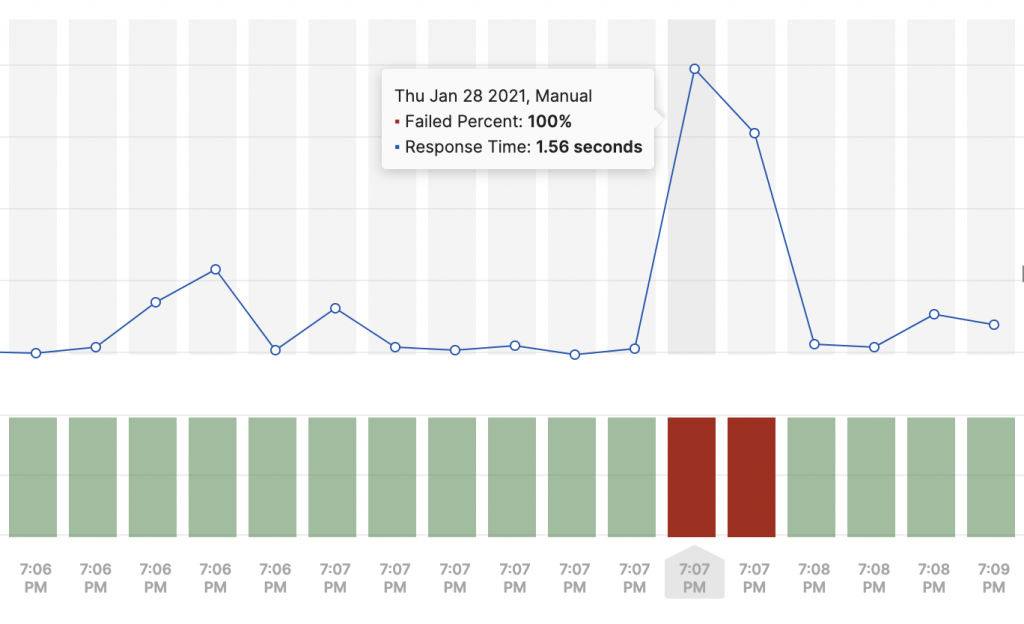
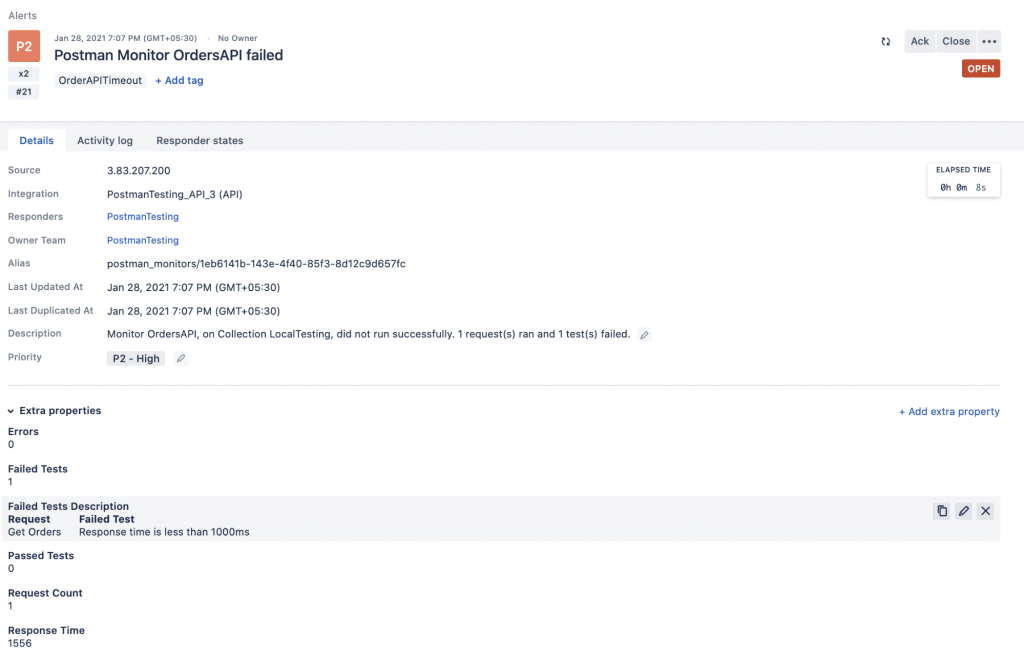
Details of Opsgenie integration alerts
- To ease viewing, multiple alerts from the same monitor are grouped under a single Opsgenie alert. Details for each incoming alert can be seen under the Activity Logs on the Opsgenie alert.
- An Opsgenie alert is closed upon the first success of the monitor after failure(s). This helps you focus on alerts that need your immediate attention and come back to closed alerts later for further investigation.
- You can set up tags and priorities when you configure the integration. Setting up these properties properly will help in writing the correct workflows.
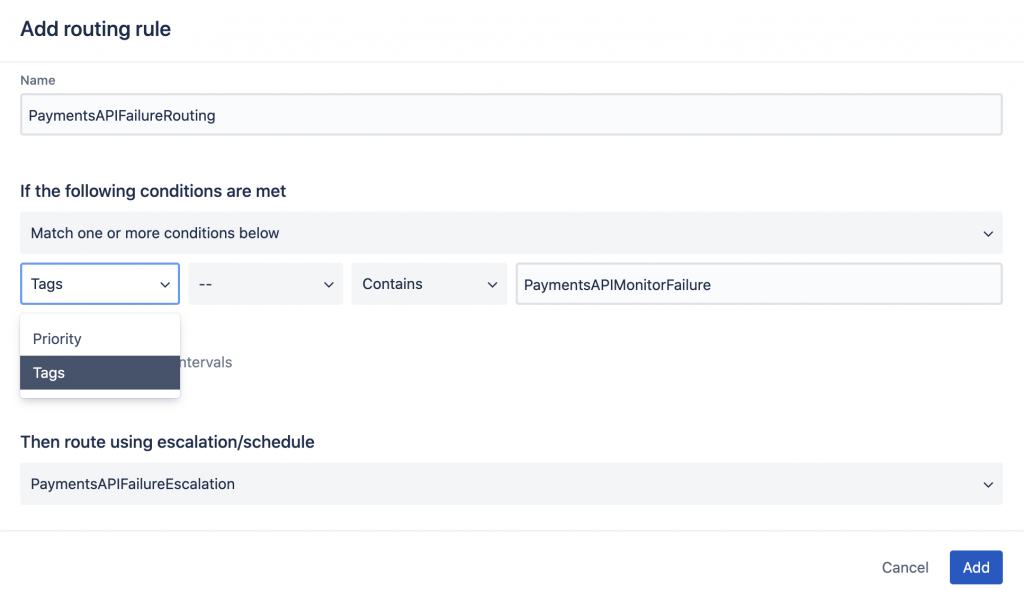
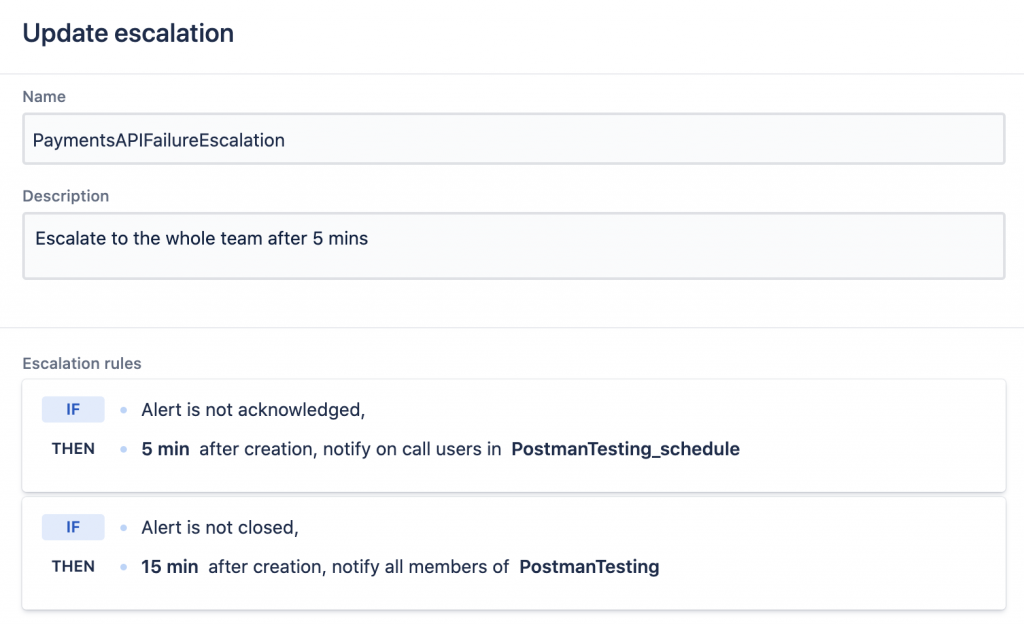
Here is an example workflow to effectively create an Opsgenie incident from a Postman monitor alert:
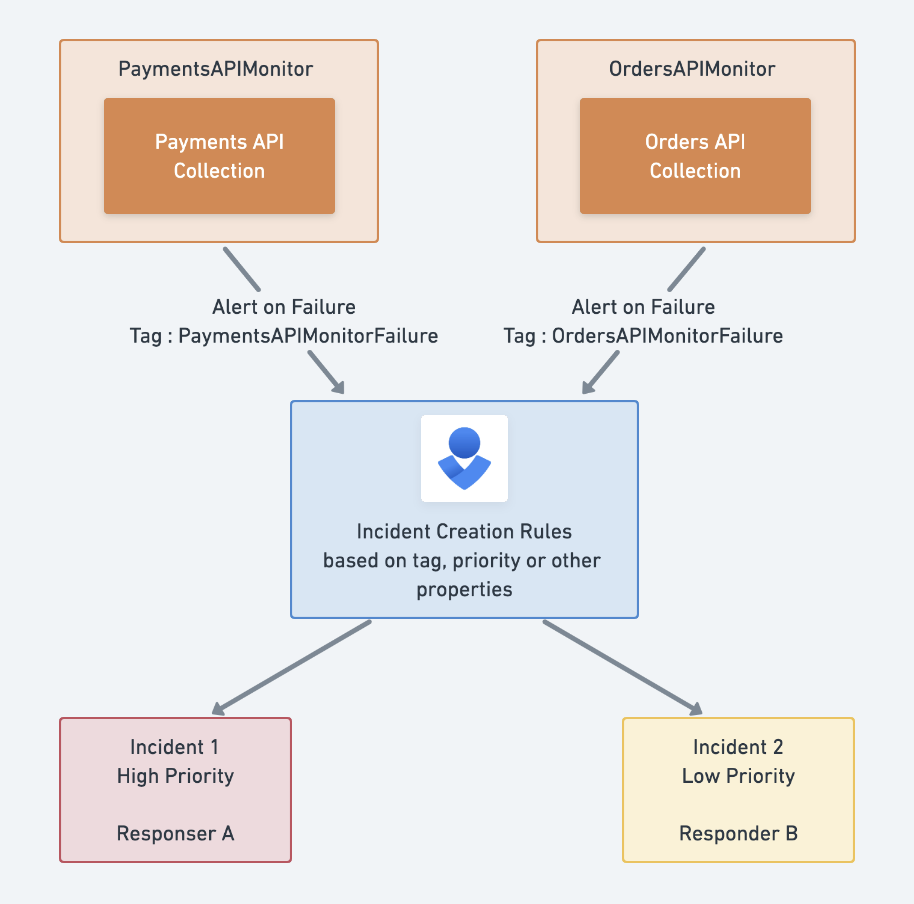
- After configuring the integration, each monitor upon failure will create an alert in Opsgenie.
- Properties like tags and priority can be set while configuring the integration.
- Incidents are either created manually or automatically using Opsgenie’s incident-creation rules.
- Opsgenie recommends using automated incident creation rules to create incidents for high-priority failures.
- Tags and priority, sent along with the alert, can be used to filter and create incidents with appropriate priority, escalations, and schedules.
- Configurations can also be added while creating the “API Integration” on Opsgenie.
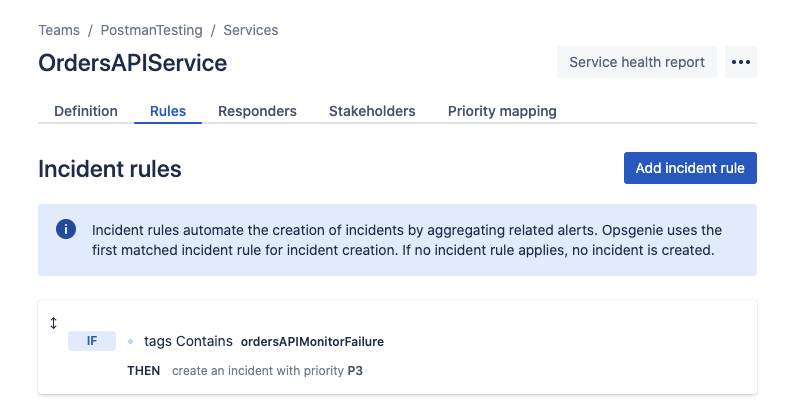
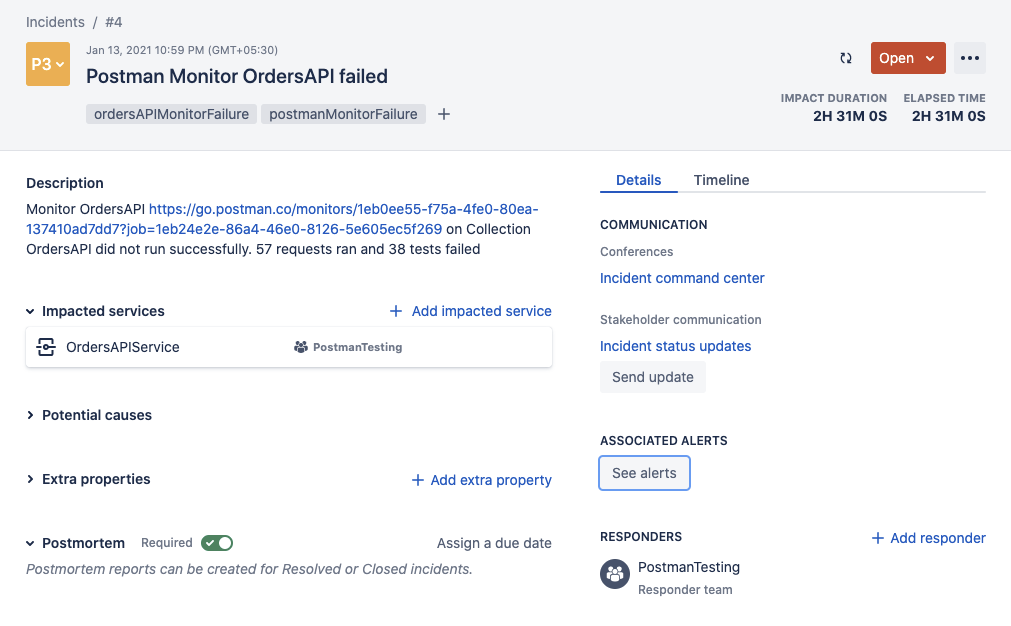
This Opsgenie integration is another way we’re working to give Postman users greater real-time visibility into their APIs. Stay tuned as we continue to bring in more integrations across workflows to improve productivity, visibility, and collaboration.
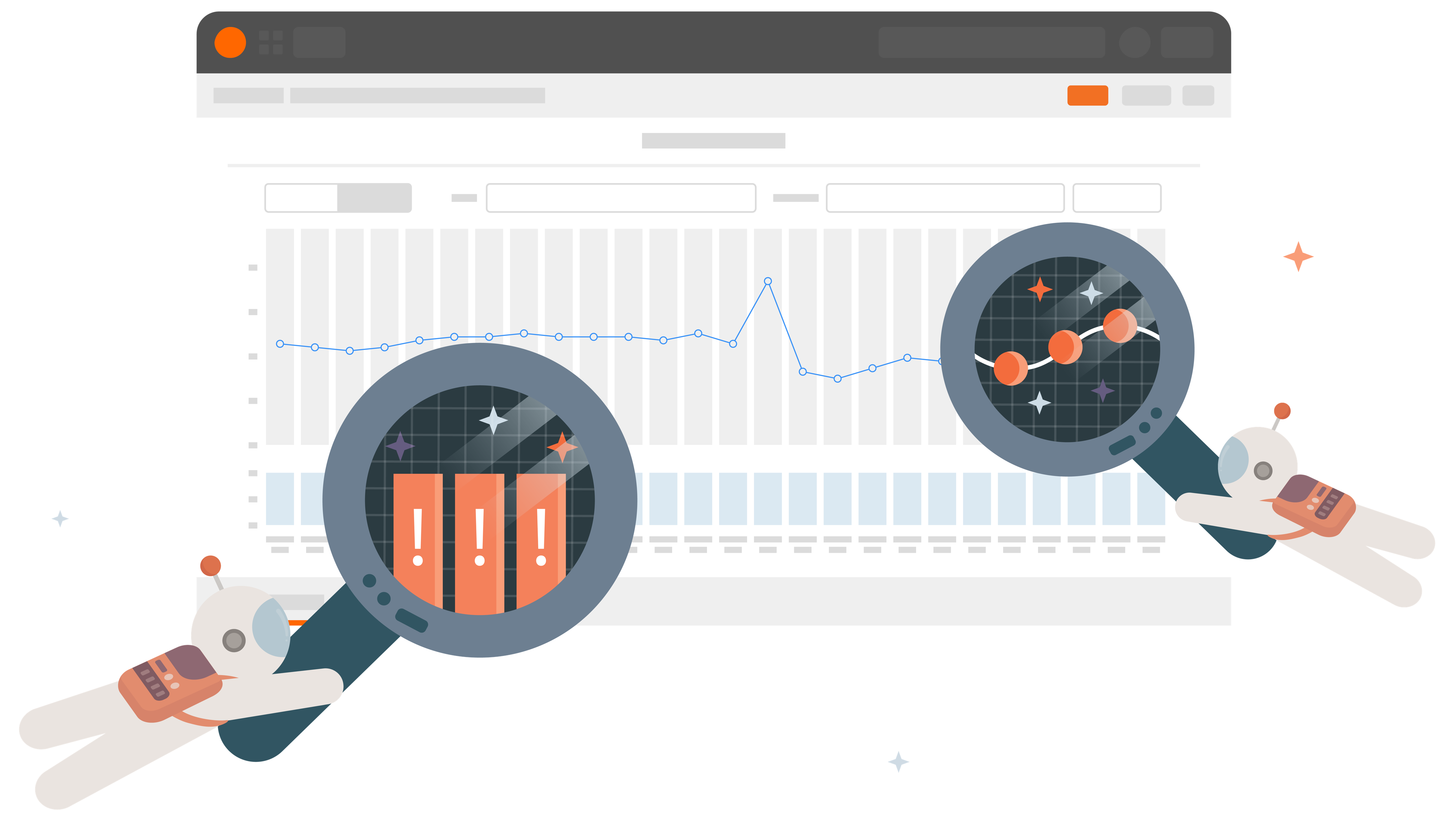
Thank you for sharing such a nice and informative Blog.
multivendor ecommerce app